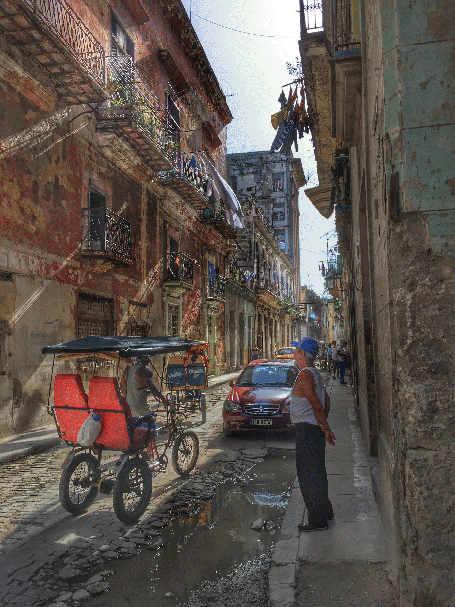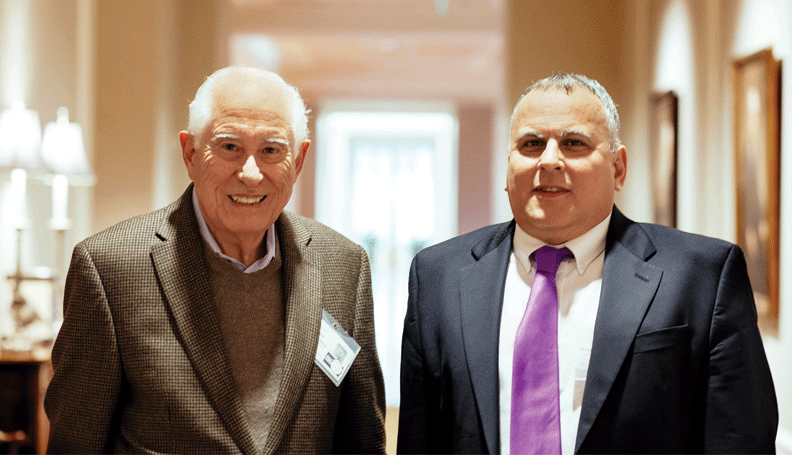
Editor's note: This article is also available in Spanish and Portuguese.
Tourism is becoming a bright spot for Cuba in wake of the restoration of diplomatic relations with the United States, but significant economic challenges remain, two experts on the island country recently said.
Omar Everleny Pérez Villanueva, a former economics professor at the University of Havana, and Carmelo Mesa-Lago, professor emeritus of economics and Latin American studies at the University of Pittsburgh, recently spoke at the Federal Reserve Bank of Atlanta about Cuba's promises and challenges. The upshot: although Cuba's leadership has initiated some reforms that represent a move in the right direction, the country must address barriers.
"The only thing growing is tourism," said Pérez Villanueva.
Arrivals grow, but so does policy uncertainty
Annual visitor arrivals to Cuba have steadily climbed in the past decade and reached four million in 2016, he noted.
In the first six months of last year, the number of American visitors rose 80 percent to just under 137,000, the government reported. Travel to Cuba from the United States has picked up since former U.S. President Barack Obama announced the restoration of diplomacy with Cuba in 2014, following a half-century U.S. embargo on trade with the island nation. Tourists to Cuba from Canada outnumber those from any other country.

With regard to the United States, the big question is whether President Donald Trump will alter the policy of normalized relations. Mesa-Lago said he doesn't yet know how Trump might engage Cuba.
Having gained approval last year to start commercial flights to the island, U.S. airlines are digging into the Cuba market for the long run. Tourism to Cuba is not allowed for U.S. citizens, but Americans can be approved under 12 categories of travel, including professional research, journalism, support for the Cuban people, and family visits.
The Cuban travel market for U.S. visitors may take time to develop. In a sign that demand for their new Cuba flights is not enough to fill the airplanes, some U.S. carriers announced plans to scale back their Cuba service in recent weeks. JetBlue, which flies to Cuba from Fort Lauderdale, Orlando, and New York, said in February that that it would switch to smaller planes on several flights. JetBlue said in a statement that it's common practice to alter flight schedules and airplane types, especially on new routes. American Airlines also trimmed its Cuba schedule to 10 daily roundtrips from 13.
Still, U.S. airlines see Cuba as a viable market. Delta Air Lines and American opened ticket offices in Havana in recent months. Alaska Airlines, which began a daily nonstop flight between Los Angeles and Havana in January 2017, said leisure markets such as Havana tend to take longer to ramp up than business destinations.
"We've been flying into Havana for just over a month, which is not enough time to draw any conclusions about the performance of a new route," Alaska spokesperson Bobbie Eagan said in a statement. "A normal new market takes up to three years to mature, and we know Havana will take time, but we're in it for the long haul."
If the embargo ends along with the prohibitions on tourism, that would likely pay dividends for U.S. airlines, given surveys that show solid interest in visiting Cuba.
GDP declines as tourism increases
Despite tourism's strength, Cuba's gross domestic product declined about 1 percent last year, its first such decrease since the early 1990s, as Venezuela's sales of oil to the island fell significantly, according to media reports. Cuba supplies medical professionals to Venezuela, and contracts for those services have also fallen.
 Carmelo Mesa-Lago, left, and Omar Everleny Pérez Villanueva say Cuba faces economic challenges that include a large fiscal deficit, dual currencies that must be unified, and declining labor force participation.
Carmelo Mesa-Lago, left, and Omar Everleny Pérez Villanueva say Cuba faces economic challenges that include a large fiscal deficit, dual currencies that must be unified, and declining labor force participation.Mesa-Lago says Cuba's dependence on Venezuela, its biggest trade partner, is a problem. He says 10 percent to 12 percent of Cuba's gross domestic product is tied to Venezuela, where falling oil prices have brought on a severe economic slump that has produced high inflation and shortages of food. "Cuba has to diversify its trade partners," Mesa-Lago said.
He said reforms initiated by the government of Raul Castro—including expanding private ownership of business, allowing citizens to buy and sell homes and cars, and approving a law to boost foreign investment—are steps in the right direction. Even so, Cuba faces serious challenges that include a large fiscal deficit, dual currencies that must be unified at some point, and decreasing labor force participation, the two visiting scholars said. They added that "Cuba is spending more than it is generating in revenue."
Foreign enterprises operating in Cuba have limits on their autonomy and cannot hire or set pay ranges for workers, Mesa-Lago said. "Producers lack the flexibility to expand because of all the restrictions the government puts on [them]," he said.
To capitalize on the increased interest in traveling to Cuba, the country needs to become more equipped to handle tourists by modernizing its airports and adding hotels and entertainment options that will appeal to sophisticated travelers, the two scholars said.
"Many of the hotels need refurbishing," Mesa-Lago said. "There is more demand than supply. Prices are going through the roof."




